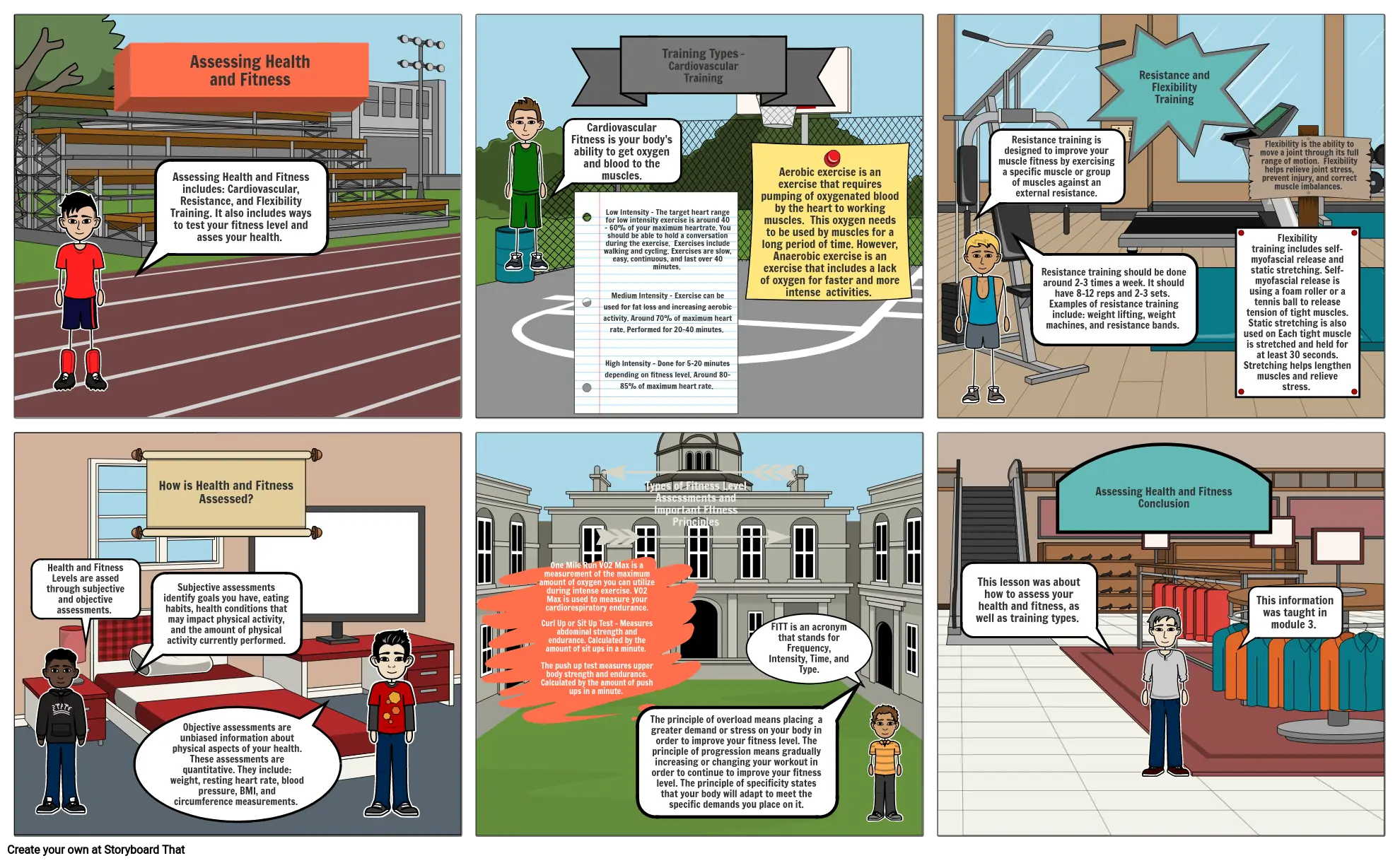3rd Module Rough Draft

Kuvakäsikirjoitus Teksti
- Assessing Health and Fitness
- Assessing Health and Fitness includes: Cardiovascular, Resistance, and Flexibility Training. It also includes ways to test your fitness level and asses your health.
- Cardiovascular Fitness is your body's ability to get oxygen and blood to the muscles.
- Training Types - Cardiovascular Training
- Low Intensity - The target heart range for low intensity exercise is around 40 - 60% of your maximum heartrate. You should be able to hold a conversation during the exercise. Exercises include walking and cycling. Exercises are slow, easy, continuous, and last over 40 minutes. Medium Intensity - Exercise can be used for fat loss and increasing aerobic activity. Around 70% of maximum heart rate. Performed for 20-40 minutes. High Intensity - Done for 5-20 minutes depending on fitness level. Around 80-85% of maximum heart rate.
- Aerobic exercise is an exercise that requires pumping of oxygenated blood by the heart to working muscles. This oxygen needs to be used by muscles for a long period of time. However, Anaerobic exercise is an exercise that includes a lack of oxygen for faster and more intense activities.
- Resistance training is designed to improve your muscle fitness by exercising a specific muscle or group of muscles against an external resistance.
- Resistance training should be done around 2-3 times a week. It should have 8-12 reps and 2-3 sets. Examples of resistance training include: weight lifting, weight machines, and resistance bands.
- Resistance and Flexibility Training
- Flexibility training includes self-myofascial release and static stretching. Self-myofascial release is using a foam roller or a tennis ball to release tension of tight muscles. Static stretching is also used on Each tight muscle is stretched and held for at least 30 seconds. Stretching helps lengthen muscles and relieve stress.
- Flexibility is the ability to move a joint through its full range of motion. Flexibility helps relieve joint stress, prevent injury, and correct muscle imbalances.
- Health and Fitness Levels are assed through subjective and objective assessments.
- How is Health and Fitness Assessed?
- Subjective assessments identify goals you have, eating habits, health conditions that may impact physical activity, and the amount of physical activity currently performed.
- Objective assessments are unbiased information about physical aspects of your health. These assessments are quantitative. They include: weight, resting heart rate, blood pressure, BMI, and circumference measurements.
- One Mile Run VO2 Max is a measurement of the maximum amount of oxygen you can utilize during intense exercise. VO2 Max is used to measure your cardiorespiratory endurance.Curl Up or Sit Up Test - Measures abdominal strength and endurance. Calculated by the amount of sit ups in a minute. The push up test measures upper body strength and endurance. Calculated by the amount of push ups in a minute.
- Types of Fitness Level Assessments and Important FItness Principles
- The principle of overload means placing a greater demand or stress on your body in order to improve your fitness level. The principle of progression means gradually increasing or changing your workout in order to continue to improve your fitness level. The principle of specificity states that your body will adapt to meet the specific demands you place on it.
- FITT is an acronym that stands for Frequency, Intensity, Time, and Type.
- This lesson was about how to assess your health and fitness, as well as training types.
- Assessing Health and Fitness Conclusion
- This information was taught in module 3.
Yli 30 miljoonaa kuvakäsikirjoitusta luotu

